Yu choy is a popular Chinese side dish. Cooked up in minutes and topped with a savory sauce, this recipe is the perfect vegetable dish to serve with any Asian meal!
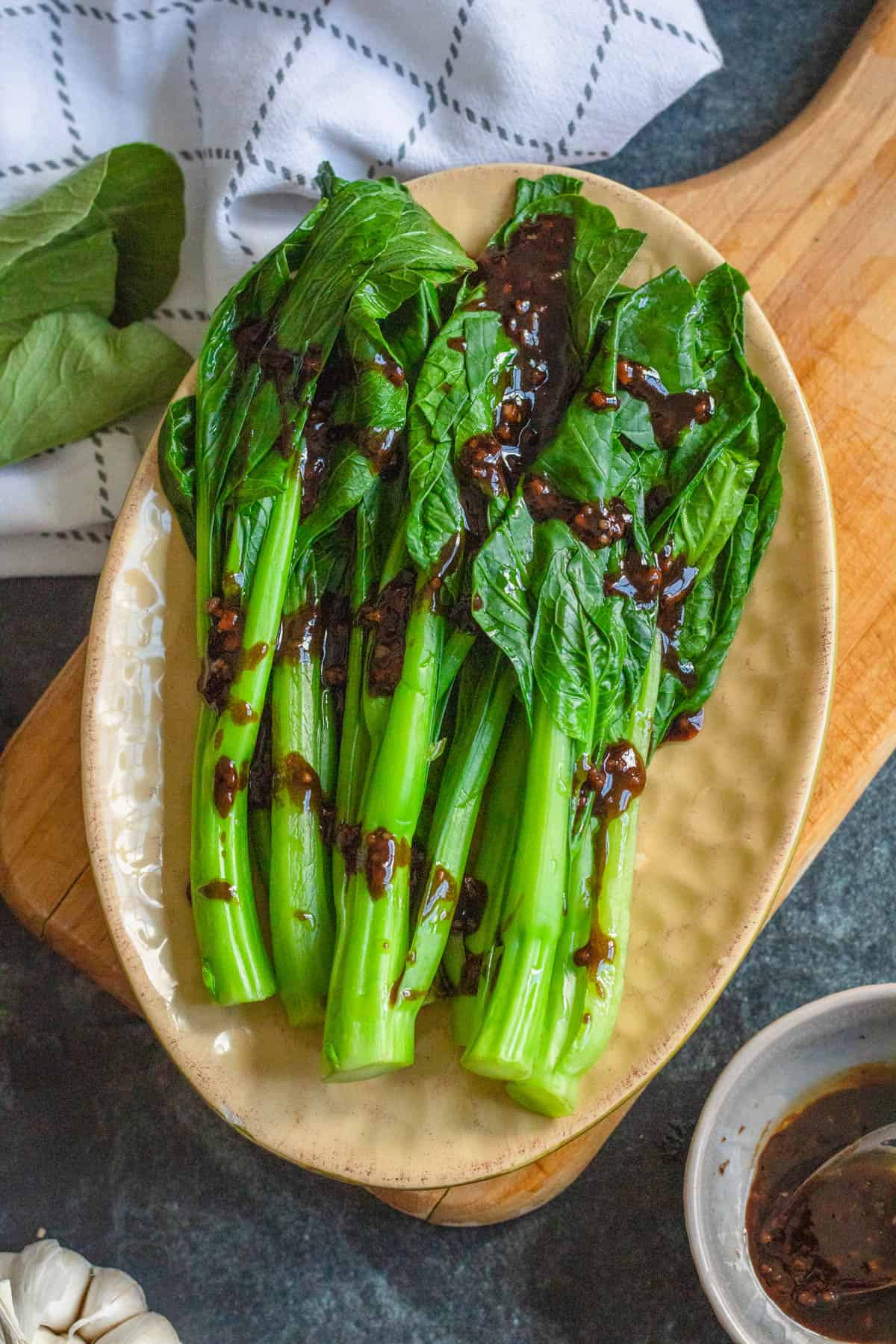
“Hello Reader! I try my hardest to research recipes as best as I can before posting to ensure I am representing each culture correctly. If this recipe is from your country and I have made a mistake or you have suggestions for how to make it more authentic, I would love to hear! Please leave a comment below letting me know what should be different, and I will rework the recipe. It is always my intention to pay homage and respect to each cultural dish that I cook. Thanks for reading!”
No Chinese meal is complete without a green vegetable, and yo choy is the perfect choice!
This beautiful, leafy green cooks up in less than 10 minutes and the stalk and leaf offer a variety of textures in one vegetable. The flavor is subtle, not sweet or bitter.
This delicious vegetable is a fantastic side dish to accompany just about any Chinese cuisine. It’s a great healthy addition alongside a protein (like Beef and Broccoli or Steamed Pork Buns) or can be added to a bowl of noodles to add some flavor and depth. It’s also a fantastic side to add to a dim sum meal, giving a nice reprieve from dumplings and protein.
If you’re looking for a healthy, delicious side dish to add to your next meal, look no further.
Recipe Origin
Yu choy has been a popular Chinese vegetable since ancient times. It’s a flowering plant that is part of the mustard family.
In Cantonese, yu choy translates to “oil vegetable” because the plant is commonly grown for the seeds which make canola oil.
Yu choy also goes by the name “choy sum” which translates to “Veggie heart” or “flowering green” which refers to the heart of the vegetable.
Yu choy is a popular side dish in many Chinese homes because it is available year round, but it is also often served in Chinese restaurants as part of dim sum. Dim sum is a type of meal where small plates are shared among the table. This green veggie gives a nice break between dumplings and protein.
Choy sum is not the same as Chinese broccoli or gai lan. Gai lan has a slightly bitter taste and thicker stems. Yu choy has a thinner stem and bright yellow flowers. The taste of choy sum is much sweeter than gai lan. The dark green oval leaves are more tender, like spinach. The texture of this green, leafy vegetable is similar to bok choy.
Yu choy is a popular addition to a lot of Asian cuisine and is cooked in many different ways including adding to soups, blanching, or cooking it in a stir fry. This recipe calls for blanching the leaves in boiling water and covering them with a delicious garlic sauce.
How Do You Select Your Yu Choy?
When you’re looking at yu choy at your local Asian grocery store, you may see them come in different sizes. The different sizes just depend on when the plant was picked.
Which size you choose really depends on whether you like the texture of the stalks or the leaves better. If you choose larger, more mature yu choy, you might want to cut the stems from the leaves and add the stems to the water first to cook for a moment longer than the leaves.
Yo choy grow yellow flowers as they mature, but when they produce flowers the stems may become tougher. When I pick yu choy, I try to find plants with little or no flowers.
You want to choose leaves that are green and crisp, not limp. Look for firm stalks as well with no dryness at the bottom and no yellowing or browning.
Any yellowing on the stems or leaves is a sign that the vegetable is not very fresh. You can still cut off the yellow parts and eat it, but it won’t be as sweet.
You can store raw, unwashed yo choy in the refrigerator for five to seven days. Wrap it in newspaper or a paper towel to keep the leaves crisp.
How to Prepare Yu Choy for Cooking?
You will need to clean your yu choy carefully before cooking it. Dirt and sand often gets stuck between the stalks and leaves.
Fill your sink with cold water and place your leaves in the water until covered. Shake them gently to loosen dirt and let it soak for 5-15 minutes. Remove your leaves from the water and drain the sink. I recommend doing this at least three times.
Trim a small amount off the bottom of your stems to remove any dryness before cooking.
Why Make This Recipe?
- Quick Side dish: This vegetable takes less than 10 minutes to prepare and still packs a great amount of flavor.
- Healthy Greens: Yu choy is a great, healthy veggie that adds balance to any protein-heavy meal.
- Taste of China: Yu choy is very popular in China and across Asia and when it cooks up so quickly and contains so much flavor, it’s not hard to see why!
What Do I Need To Make This Recipe?
Ingredients
Here is a visual overview of the ingredients in the recipe. Scroll down to the recipe at the bottom for quantities.
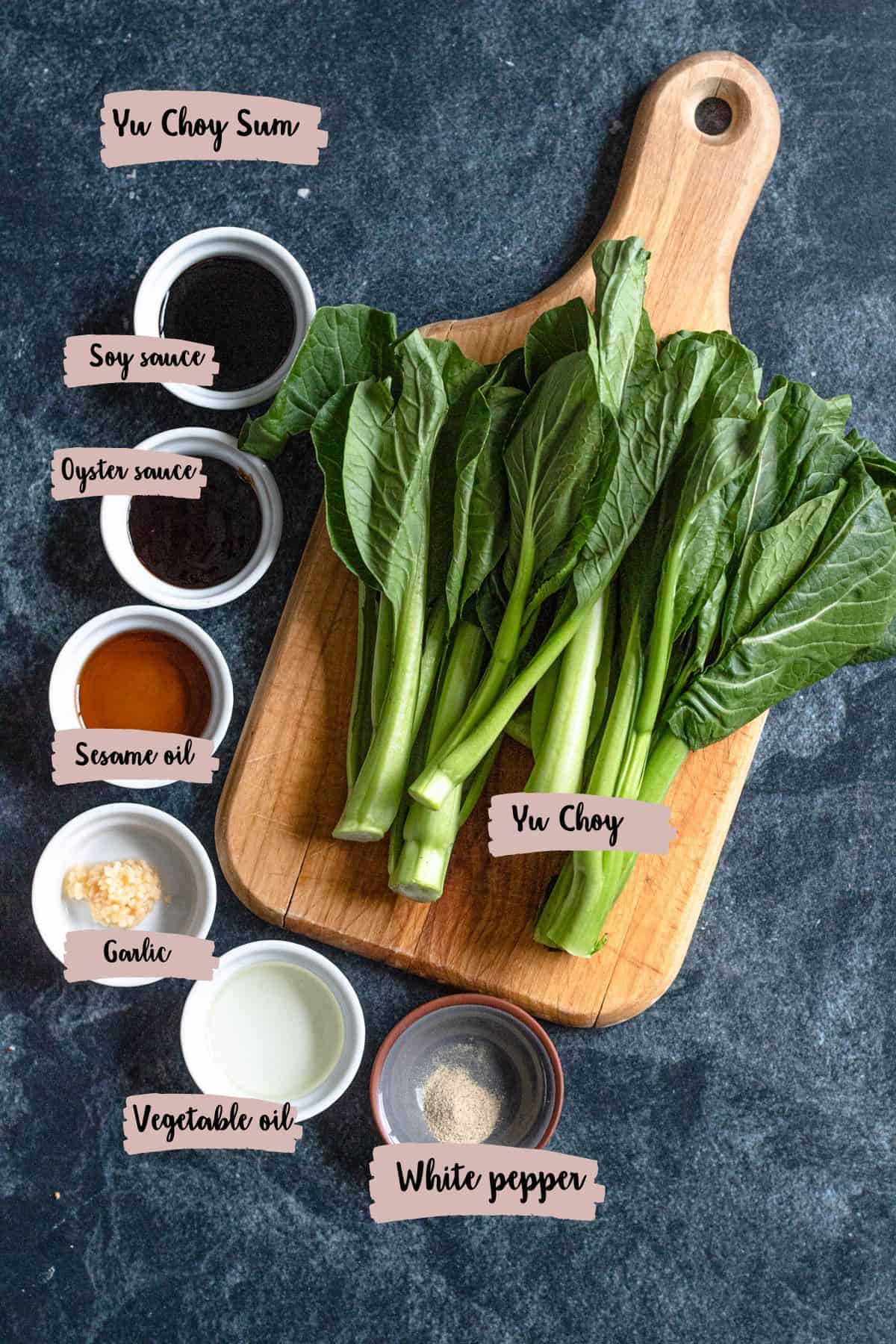
- Yu choy: You can usually find these leafy greens at any Asian grocery store in the produce section. See above for how to pick the highest quality available.
- Sesame Oil: Fresh sesame oil will add the best flavor. If you’re unsure if your sesame oil is still good, read this article.
- Oyster Sauce: Oyster sauce provides great flavor to this recipe. You can substitute hoisin sauce to make the recipe vegan.
Tools
- Large Pot: You’ll need a pot large enough to quickly blanche your leaves.
- Colander: It’s a good idea to place your yu choy into a colander for a few minutes before adding the sauce to remove excess liquid and keep the sauce from diluting.
How to Make This Recipe?
[adthrive-in-post-video-player video-id=”rDWZdFQt” upload-date=”2022-10-16T23:06:45.000Z” name=”Yu Choy Sum” description=”Yu choy is a popular Chinese side dish. Cooked up in minutes and topped with a savory sauce, this recipe is the perfect vegetable dish to serve with any Asian meal!” player-type=”default” override-embed=”default”]
Step 1: Blanche the leaves
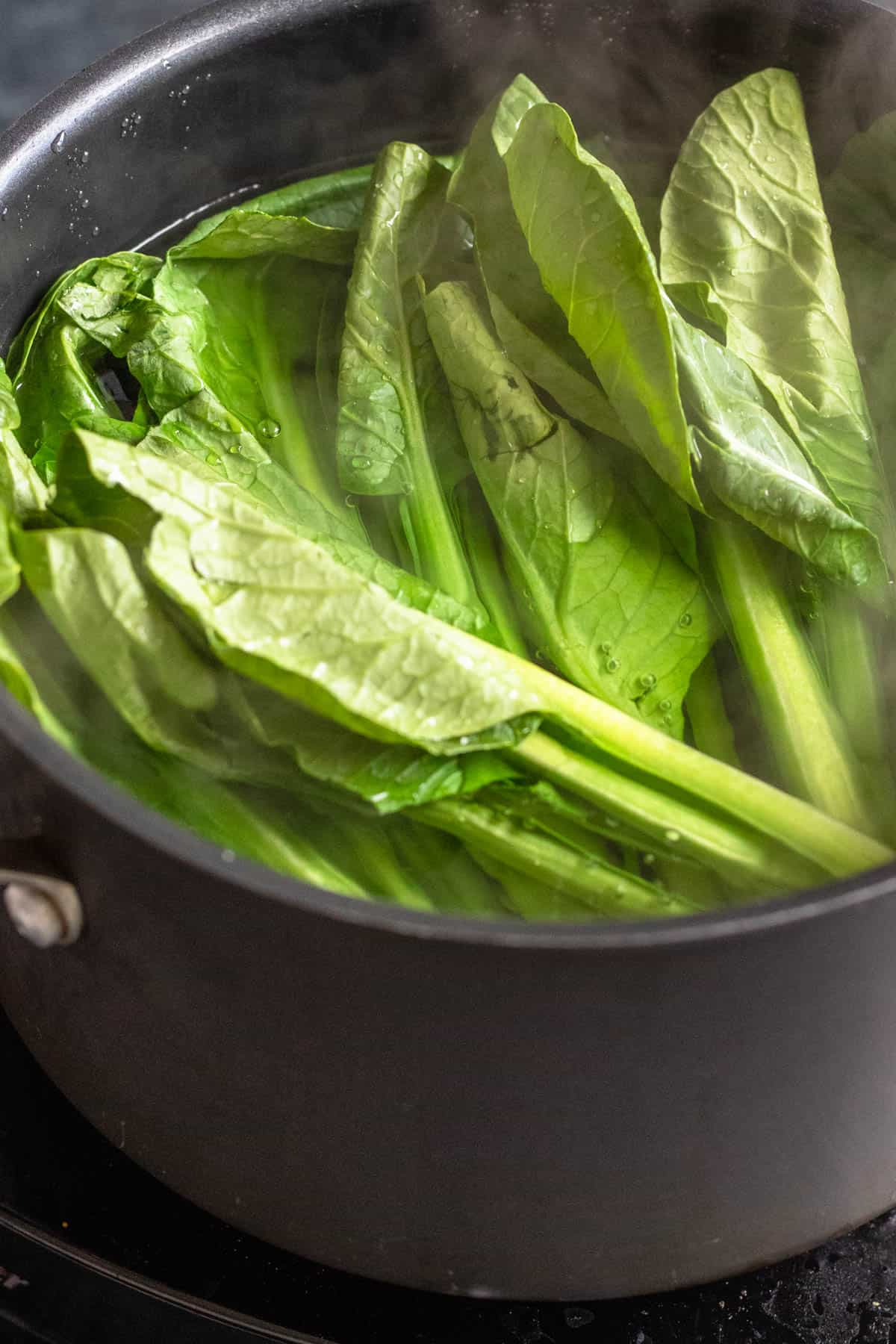
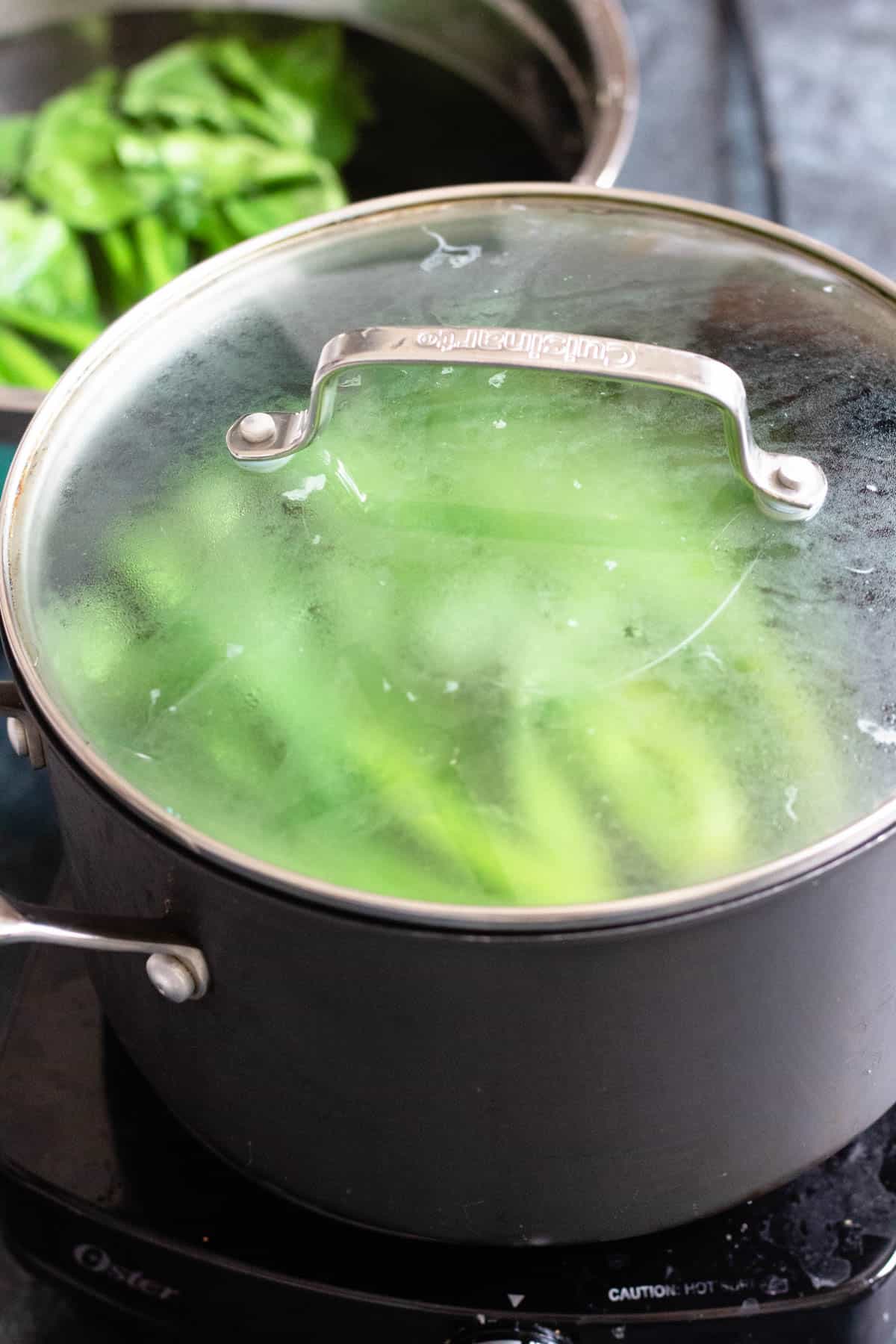
Bring a large pot of water to a boil and add 1 tbsp of vegetable oil into the pot.
Once the water is boiling, add the yu choy and blanch. Remove the yu choy from the pot after 30 seconds – 1 minute depending on desired doneness.
Place the cooked choy sum in a large, cold bowl of water to stop the cooking process. Once it is cooled off, transfer it again to a colander and allow it to drain off any extra water. Set aside.
Step 2: Prepare the Sauce
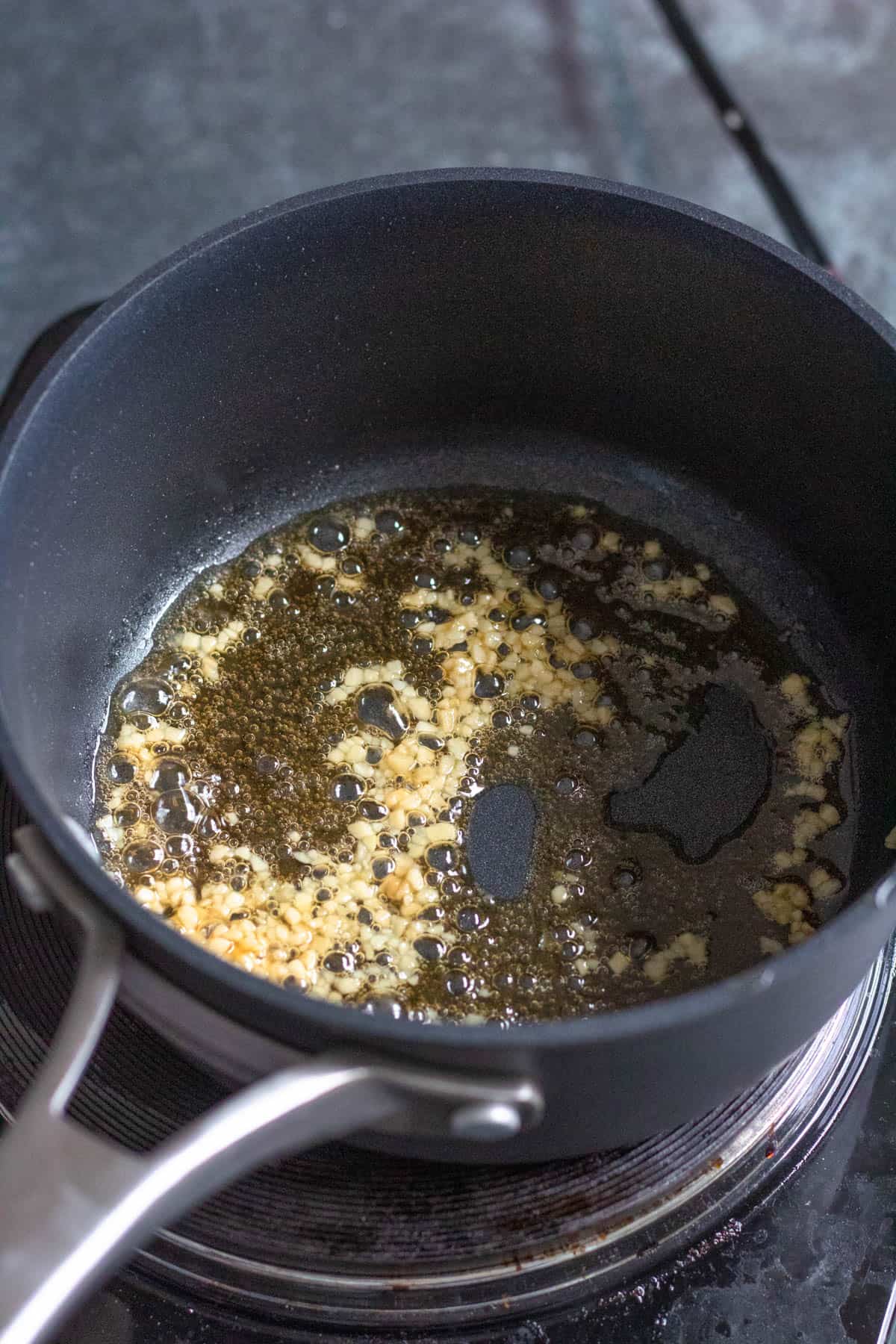
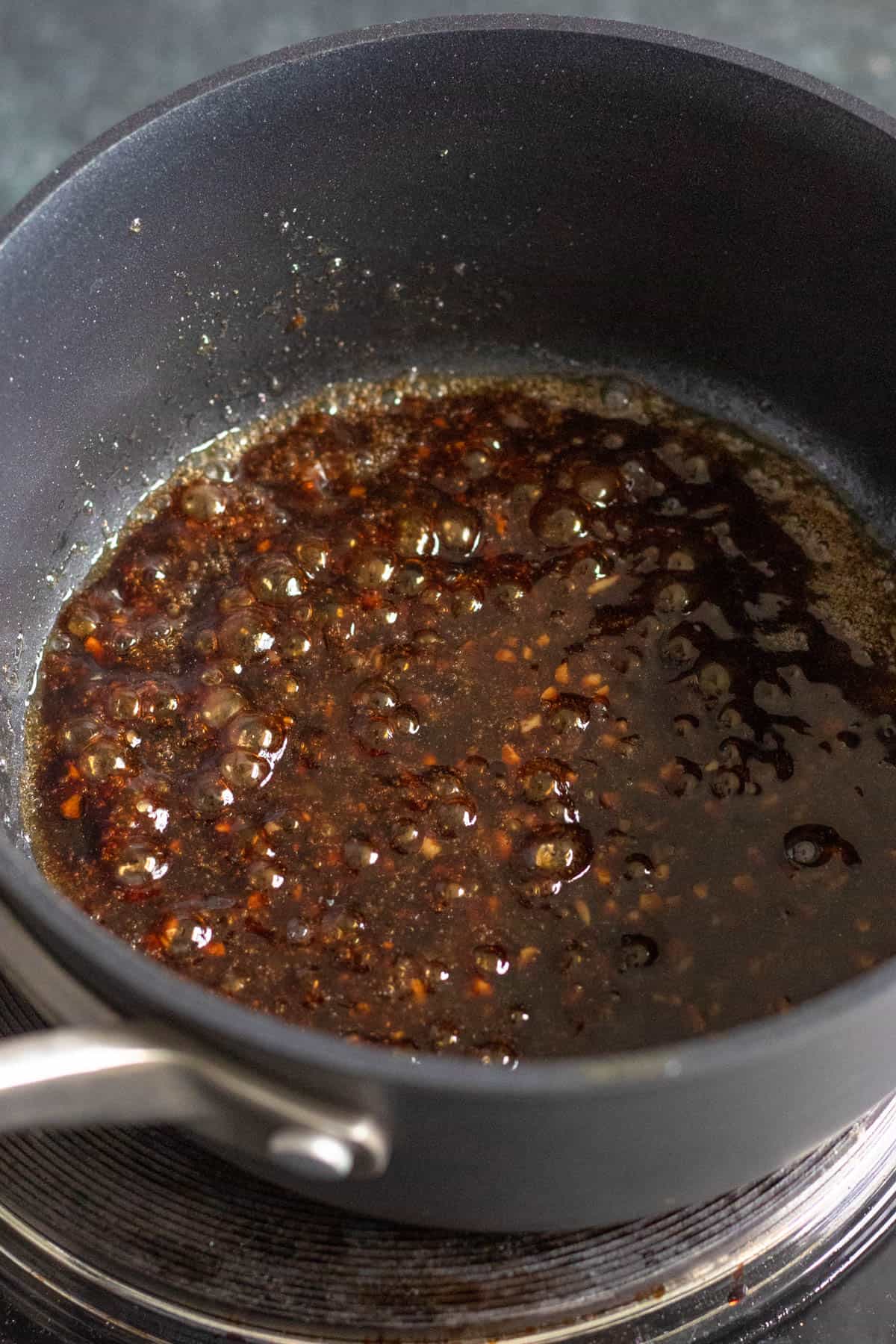
In a small pot, add the sesame oil over medium heat. Once warmed, add the minced garlic and saute for a few minutes until the garlic is fragrant.
Add the oyster sauce, soy sauce, and white pepper and whisk to combine. Stir until the sauce begins to simmer, then remove it from the heat.
Step 3: Combine the Sauce and Vegetable
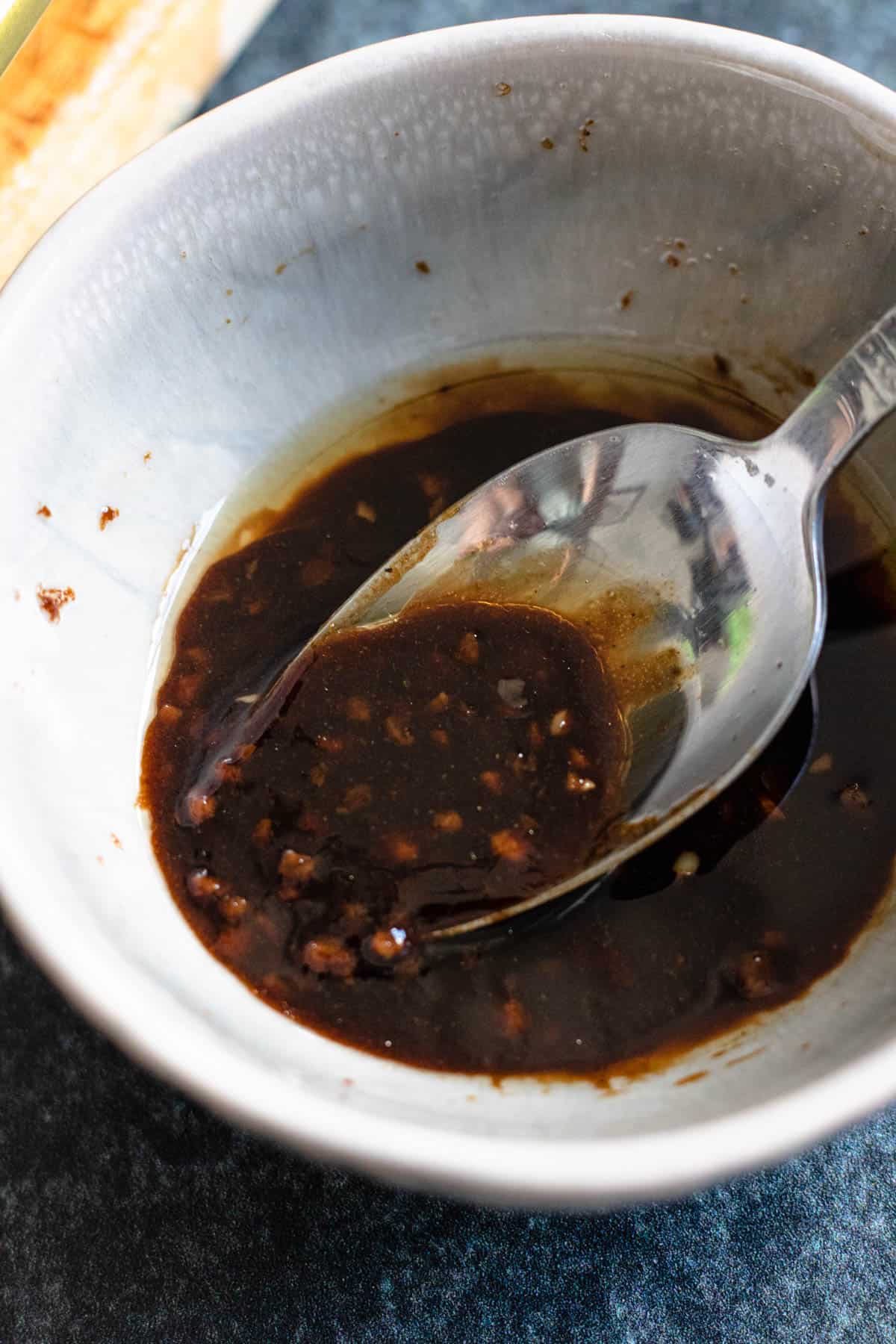
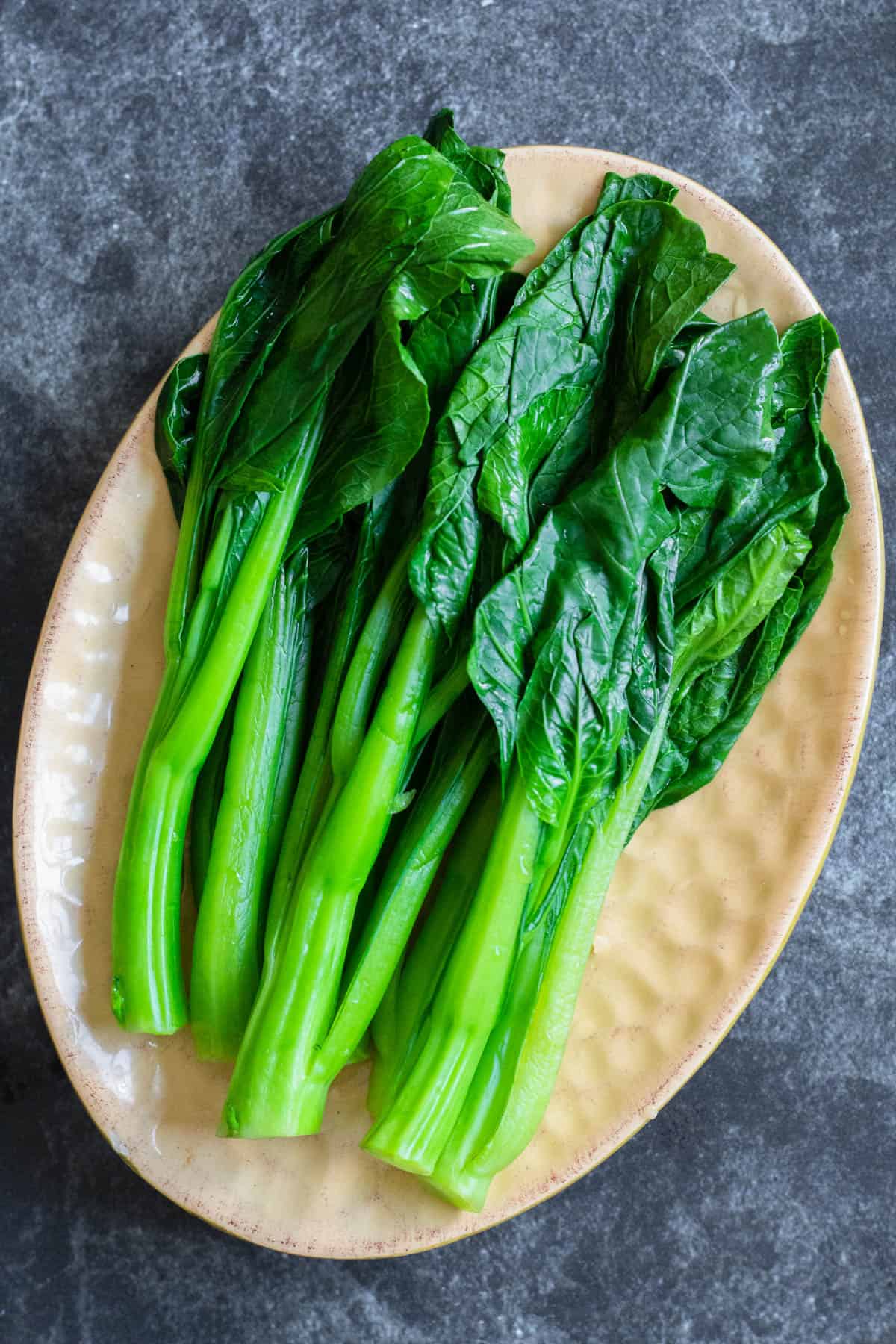
Place the choy sum on a serving platter. Pour the delicious sauce over the dark green leaves and enjoy!
Expert Tips
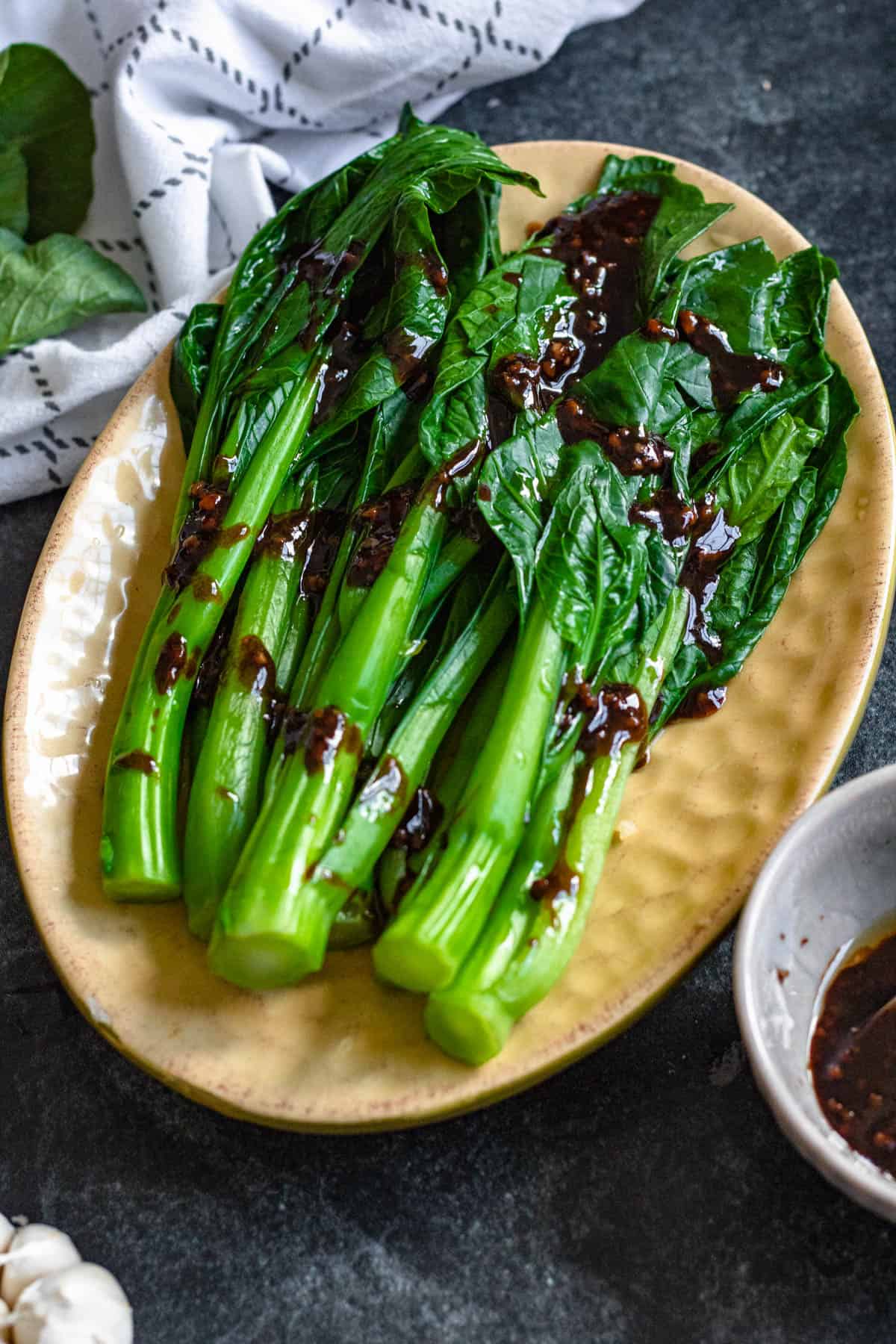
- For the best results, wash the leaves several times before cooking to rid the stems of any dirt
- Be careful not to overcook your yu choy! As the leaves cook they will turn dark green. Cooking too long will cause them to lose the vibrant color.
- Prepare your ice bath before blanching so that you can very easily add the blanched vegetables into the water ASAP.
Recipe FAQs
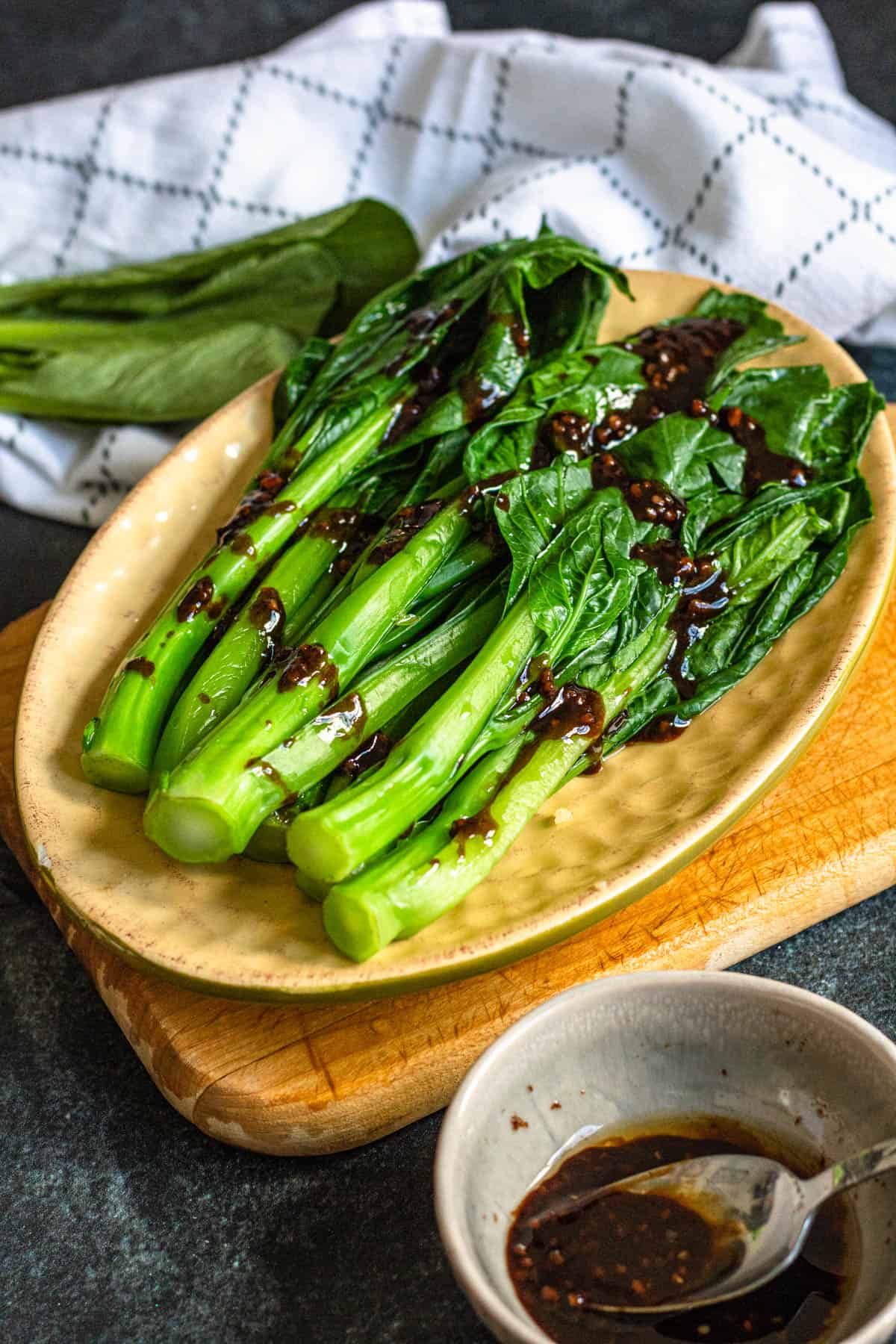
Yu Choy is usually sold at any Chinese or Asian grocery store. It’s sold fresh in the produce section. The store may have it listed as choy sum or yu choy sum.
Every part of the yu choy is edible, including the leaves, stalks and flowers. For this recipe I like to try to choose yu choy that does not have many flowers as the more mature the plant is, the tougher the stalks are.
Yu choy is not the same as bok choy. Both are popular Chinese vegetables but bok choy has a broader stem that is white in color, with broad green leaves. Yu choy has green stalks and is usually smaller.
Yu choy or choy sum is rich in vitamin A, vitamin B and vitamin C. It’s also a good source of iron, calcium, magnesium, carotenes lutein and zeaxanthin. It’s a good antioxidant and also great for your skin and eyes.
Yes, this recipe can easily be made vegan by trading the oyster sauce for hoisin sauce.
Did you enjoy this Yu Choy Sum recipe? If so, be sure to check out these other recipes I picked out just for you:
- Dim Sum Chicken Feet
- Chinese Egg Rolls
- Peking Duck Recipe
- Brussels Sprouts Recipe
- What To Serve With Potstickers

Yu Choy Sum
Ingredients
- 1 tbsp Vegetable Oil
- 1 lb Yu choy, washed thoroughly
- 1 tbsp Sesame oil
- 2 tsp garlic, minced
- 1 tbsp Oyster sauce
- 1 tbsp Soy sauce
- ¼ tsp White pepper
Instructions
- Bring a large pot of water to a boil and add 1 tbsp of vegetable oil into the pot.
- Once the water is boiling, add the pound of yu choy and blanch. Remove the yu choy from the pot after 30 seconds – 1 minute depending on desired doneness.
- Place the cooked choy sum in a large, cold bowl of water to stop the cooking process. Once it is cooled off, transfer it again to a colander and allow it to drain off any extra water. Set aside.
- In a small pot, add 1 tbsp sesame oil over medium heat. Once warmed, add the 2 tsp minced garlic and saute for a few minutes until the garlic is fragrant.
- Add the 1 tbsp oyster sauce, 1 tbsp soy sauce, and ¼ tsp white pepper and whisk to combine. Stir until the sauce begins to simmer, then remove it from the heat.
- Place the choy sum on a serving platter. Pour the sauce over it and enjoy!
Notes
- Yu choy: You can usually find these leafy greens at any Asian grocery store in the produce section. See above for how to pick the highest quality available.
- Sesame Oil: Fresh sesame oil will add the best flavor. If you’re unsure if your sesame oil is still good, read this article.
- Oyster Sauce: Oyster sauce provides great flavor to this recipe. You can substitute hoisin sauce to make the recipe vegan.
- For the best results, wash the leaves several times before cooking to rid the stems of any dirt
- Be careful not to overcook your yu choy! As the leaves cook they will turn dark green. Cooking too long will cause them to lose the vibrant color.
- Prepare your ice bath before blanching so that you can very easily add the blanched vegetables into the water ASAP.


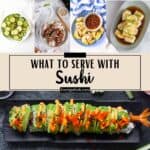

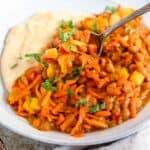

Leave a Reply